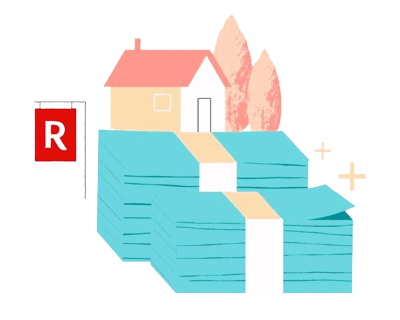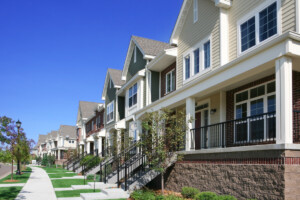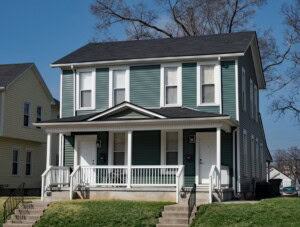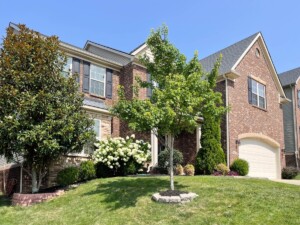Are you curious what home upgrades can boost your property’s value? Whether you’re a homeowner in San Marcos, CA, looking to maximize your property’s sale potential, or a seller seeking a deeper understanding of the Katy, TX, housing market, this Redfin article explores insights from professional homes appraisers on how to boost your home’s value and what they think will happen in the 2024 housing market. Read on to see how you too can boost your home’s value for next year’s homebuying season.
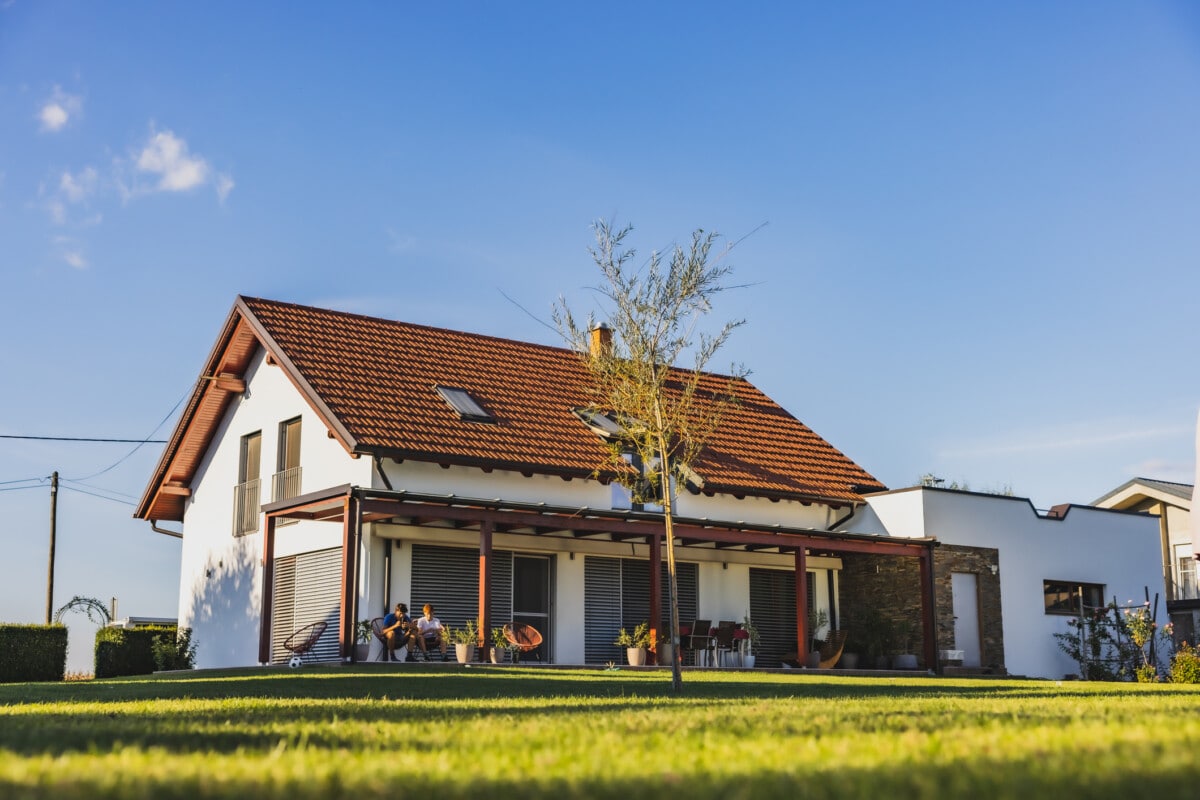
Tips on how to boost your home’s value
Homebuyers across the U.S. often seek home trends specific to different regions, states, or even cities. However, there are some home features that have a tendency to transcend these differences and appeal to the majority of homebuyers everywhere, giving your home instant appeal and boost to your home’s value.
1. Vaulted ceilings with exposed natural(ish) wood beams
Bernhardt Appraisal, based in Portland, OR, states that “Sometimes when I’m trying to figure out why a home sold for significantly more than other homes, I notice that homes with decorative or vaulted ceilings can sell for more, especially if there’s a secondary material involved, like natural wood, painted wood, or more ornate plaster in historic homes.. These ceilings stand out, evoke a sense of wonder, and sometimes I find myself just staring upward with my mouth open.”
2. Boost your home’s value with thermal energy
“In my opinion, as a seasoned real estate appraiser, one of the best methods to increase your home’s value today is by adding an owned photovoltaic system rather than leasing it,” says Arnel Dimagiba from Island Realty Group, LLC. “Historically, energy costs have only moved in one direction: up. Homeowners can increase the market value of their homes while reaping the immediate benefits of renewable energy, including reducing tax liability through potential tax credits and lowering monthly electricity bills. Of course, consult your tax advisor for your specific situation.”
3. Simple upgrades
“Upgrades to things like paint, landscaping, trim, and flooring cover large areas at a lower cost, setting the base canvas for a higher value. Then, the right special features, like a beautiful cooking range or higher-end bathroom fixtures, or accordion doors that open the wall up to the outdoor living area, provide character to the home, enhancing the story about the good life the owners are enjoying there,” says Bernhardt SwissTrust Appraisal.
4. Extending living space – but only if done correctly
Increasing the living space of your home may sound like the right move to boost your home’s value, and often is actually the case, however, if done incorrectly, there are numerous pitfalls that can actually hurt your home’s potential resale value.
For example, Bernhardt SwissTrust Appraisal states that “Converting garage space into living space can have a wide range of success or failure, depending on many choices made. There are permitting issues, heating issues, and finish quality issues that can come up with converting garage space into living areas. It can also negatively alter the appearance of the front of the home. Surprisingly, I’ve even seen people convert garage living space back into a garage for parking.”
5. Unleash your homes wow factor
“While updating kitchens and baths will consistently and historically provide a big bang for your investment buck, I always recommend highlighting any wow- factor(s) your home may have,” recommends Certified Residential Appraiser, Kenneth Weiner, from Fast Track Appraisals, LLC. “Whatever were your initial top ranking features that sparked an emotional connection to your home will most likely do the same for a potential buyer within the market.”
6. What you should do in 2024
“For homeowners looking to enhance their property’s value, I offer the following insights and guidance,” assures Appraiser, Spencer W. Webb, from A-Tech Appraisal. “First, focus on curb appeal as it creates a strong first impression. Invest in landscaping, exterior paint, and well-maintained entryways. Second, prioritize kitchen and bathroom updates as they tend to have a high return on investment. Third, consider energy-efficient upgrades like insulation, efficient HVAC systems, and LED lighting, as they appeal to environmentally-conscious buyers. Lastly, don’t overlook the importance of decluttering, staging, and creating a neutral and inviting atmosphere for potential buyers.
In terms of emerging trends in the real estate industry, sustainable and eco-friendly features are gaining prominence. Buyers are increasingly interested in properties with green certifications, energy-efficient systems, and sustainable materials. Additionally, technological advancements such as smart homes, home automation, and high-speed connectivity are becoming more influential in property values. Being mindful of these trends and incorporating them into property improvements can potentially have a positive impact on future property values.”
Before upgrading your house, see which homes are selling the most and quickest in your area
“To increase your home’s value, it’s essential to consider your desired price range and research sales in your market area to determine if a typical buyer would view your home as ‘similar’ to these properties,” recommends Owner and chief appraiser, Brian Walther of Uyetake, Uyetake & Associates, Inc. based in Honolulu, HI. This is also commonly known as real estate comps. “If differences exist, consider the following questions:
- Did the sellers make renovations that seemed to enhance the property’s appeal? If so, what specific renovations were undertaken, such as which rooms were renovated and the types of materials were used?
- Do the sales involve any unique features that you could add to your home, like a solar photovoltaic system or an accessory dwelling permit?
- Does expanding the livable area have a significant impact on home prices in your area?
Every market area is unique and attracts different types of buyers. Understanding what features most potential buyers are looking for in your specific market area is crucial.
For example, in some mid- to lower-priced market areas, savvy investors have succeeded by purchasing homes in average or worse condition and renovating them in a way that appeals to a majority of potential buyers in that price range. These investors wisely avoided over improvements,” which are enhancements that go beyond typical buyer expectations. Some sellers have spent a premium on high-cost improvements that are atypical for homes in these market areas, only to be frustrated when they don’t see a significant return on their investments.”
Mistakes to avoid when updating your house
“As a real estate appraiser, I want to share with you a common mistake that many homeowners make when planning to improve their property: they don’t compare their home with similar homes in the market,” shares Appraisal Expert, Steven J. McAdams. “You need to know the actual size and condition of your home and how it matches with other properties that are selling in your area. This will help you understand what the market is willing to pay for homes like yours and what improvements are worth making. Don’t rely on your own assumptions or preferences, but let the market data guide you.
I have noticed how the post-pandemic market has shifted the preferences of home buyers and sellers. While the interior features such as the kitchen and bathrooms are still important, the exterior improvements are also gaining more attention. However, not all exterior improvements are equally beneficial. Some of them, such as over-landscaping, can actually reduce the appeal and value of your home by creating too much maintenance or a mismatch with the neighborhood.”
Understanding home sales for your area before you upgrade
Though there are national trends when it comes to the housing market, every state, city, and even neighborhood is different when it comes to how many people are buying and selling a home at any given time. Opting for home improvements that can boost your home’s value and appeal to homebuyers for your specific area will also help set expectations of what you can possibly sell your house for and what return investment you might see.
Uyetake, Uyetake & Associates, Inc. recommends “To maximize your property’s value safely, aim to align with typical expectations in your area rather than going over and above what’s customary. It’s common for homeowners to be disappointed when the custom improvements they’ve made based on their unique preferences don’t appeal to the typical demographic for the area, thus failing to add significant value to their properties. It’s also important to recognize that every market area has a price ceiling that buyers are willing to pay. Once buyers can afford more than that ceiling, they are likely to explore other market areas more suitable for their higher price range.”
What home appraisers think will happen in 2024 with home values
Jason Haroutunian from Baseline Appraisal Services shares, “Here are a few emerging trends in the real estate industry that are poised to impact property values in the coming years:
- Sustainability: Buyers are increasingly interested in homes that are sustainable and energy-efficient. This includes features like solar panels, battery storage, rainwater harvesting systems.
- Home offices: The work-from-home trend has led to an increased demand for homes with dedicated home office spaces.
- Outdoor living spaces: Buyers are also looking for homes with outdoor living spaces like patios, decks, and swimming pools.
- Accessory Dwelling Units: Accessory dwelling units (ADUs) are an emerging home trend. ADUs, also known as granny flats, in-law suites, or carriage houses, are small, self-contained living areas located on the same property as a single-family home. ADUs can be attached to the main house, be located in a finished basement, or detached (out-building or garage loft). ADUs are becoming increasingly popular because they can provide a way to generate additional income, be used as a home office or guest house, allow families to stay together while maintaining privacy, and can be a good option for seniors who want to age in place or for adults with disabilities.
Brent Bowen, Certified Appraiser, from Texas Valuation Professionals states “Like politics, all real estate is local. With that said, there are some factors which impact each locality similarly: interest rates and inflation. In 2024, effective demand will continue to be weighed down by persistent high interest rates and inflation which is below its peak levels, but still above normal. Although inventory remains low, there are indications that demand is pacing even lower, which will put downward pressure on prices. Population shifts will lessen that impact in some markets, but will exacerbate that downward pressure in other markets.”
Western United States
In California, Shawn Telford, Chief Appraiser of CoreLogic says, “According to CoreLogic data, in September, 8% of buyers nationwide and 6% in California, paid more than the appraised market value. Fresno County had the highest rate at 14%, followed by San Bernardino at 11%, Orange at 10%, and Contra Costa at 8%.
Appraisers in California, particularly these four counties, face challenges when analyzing data and estimating market value due to buyer behavior related to supply constraints, interest rates, and FOMO in the home buying process. The housing demand-supply gap will drive overall home prices up by six percent in 2024.
With mortgage rates around 6-7%, there will be fewer first mortgage refinances, and consumers may choose equity loans requiring appraisals for equity calculations. Southern California is relatively stronger than Northern California, due to more affordable SoCal markets and remote work, attracting some NorCal residents to places like Orange County, San Diego, and Los Angeles. These economic conditions and migration patterns will pose unique valuation challenges for lenders and their appraisers.”
South Central United States
In Texas, Kenneth Phillips from Kenny Jay Capital Corp thinks that, “In 2024, we anticipate a mirroring of the mid-to-latter part of 2023. Homeowners are contending with the decision of losing their low single-digit interest rate mortgages in exchange for higher rates which continue to rise. In contrast, there is still vigorous demand from out-of-state buyers, drawn by the allure of relocating from heavily regulated states, it is noteworthy that the enduring challenge of supply constraints will continue to be of concern in the foreseeable future.”
Northeastern United States
“The Maryland market is vulnerable and will continue impacting new construction sales,” says Christopher Whaley from Coldwell Banker Residential Brokerage. “With global conflict, economic turmoil, and interest rates at all-time highs, buyers will begin to chip away at the seller’s market pedestal. The last two years have shown us record-breaking refinances and sell-offs, allowing those to buy up or down depending on their desires.
For 2024, expect a decent spring unless the federal government raises the rates at the mark of the new year. The lower inventory will continue to uphold sale prices throughout the year along the popular regions. At the same time, the various government sectors and military installations will drive buyer demand for those moving into the area.”
District/Metro Appraisals thinks that “Business will remain slow for the appraiser until interest rates fall. Besides home sales, re-finances are a large part of the appraiser’s business, and that business will be slow. Mortgage buyers will keep their lower interest mortgage unless they absolutely need the equity cash that a refinancer can provide. The country’s credit card debt has been quoted at a trillion dollars. That needs to be repaid and inflation is cutting into income, especially fixed income and causing a shortage of cash to repay loans.”

